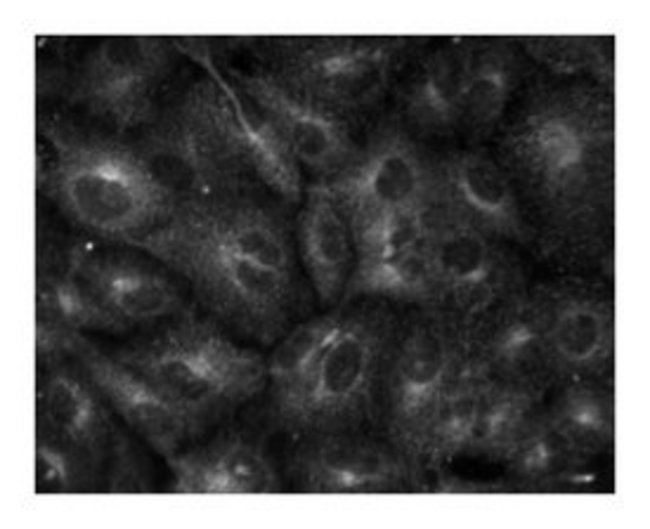PI4-Kinase β Mouse, Unlabeled, Clone: 7, BD, Mouse Monoclonal Antibody, Each

Details:
Phosphoinositide turnover is a well established mechanism of intracellular signal transduction. Sequential phosphorylation of phosphatidylinositol (PtdIns) results inPtdIns-4-phosphate (PIP) and PtdIns-4,5-bisphosphate (PIP2). Phospholipase C (PLC)hydrolyzes PIP2 to inositol-1,4,5-trisphosphate (IP3) which stimulates release of intracellular Ca2 . PIP is generated by phosphorylation of PtdIns at the D4 position of the inositol ring. This event is mediated by the PtdIns 4-kinases (PI4-K). These enzymes are divided into two types (II and III) based on their size and sensitivity to certain compounds. Although the PI4-Ks are abundantly distributed throughout the cell, activity is found primarily in association with membranous structures. Members of this family contain a lipid kinase unique domain and a C-terminal catalytic domain. Two mammalian PI4-Ks, PI4-Kα and PI4-Kβ, have been identified. PI4-Kβ is homologous to the yeast PI4-K, PIK1. Based on its size and sensitivity to wortmanin (a PI3-K inhibitor), PI4-Kβ is classified as a type III enzyme. Although it is found in the cytosol and in association with the Golgi, the specific function of PI4-Kβ is yet to be determined.Host Species: MouseClone: 7Isotype: IgG1Species Reactivity [for Features Main]: HumanImmunogen: Human PI4Kβ aa. 411-626Immunofluorescence, Western Blotting
Additional Information
| SKU | 10135446 |
|---|---|
| UOM | Each |
| UNSPSC | 12352203 |
| Manufacturer Part Number | 611817 |

